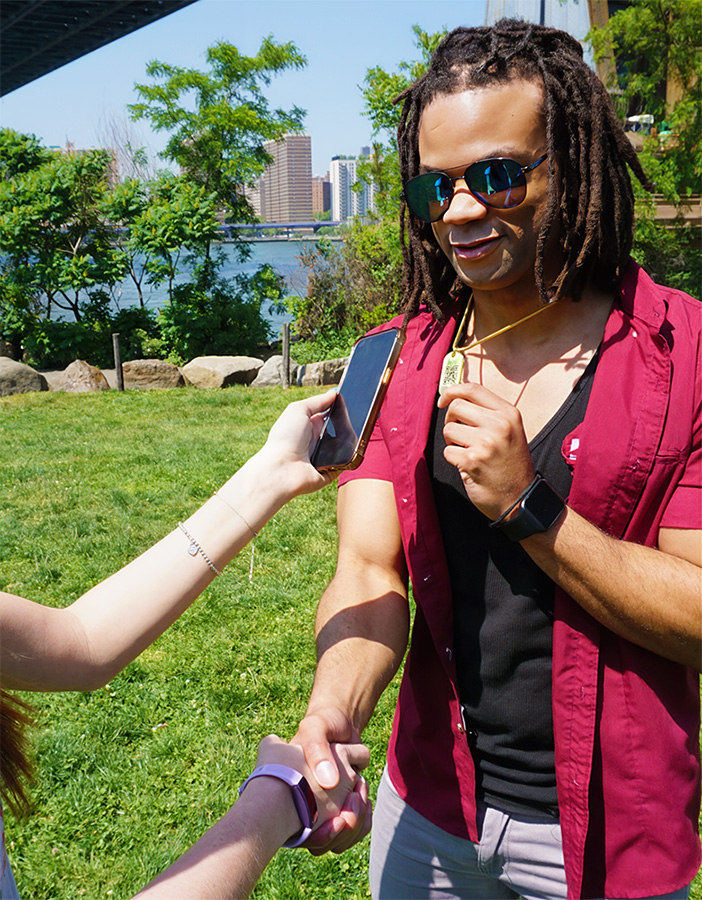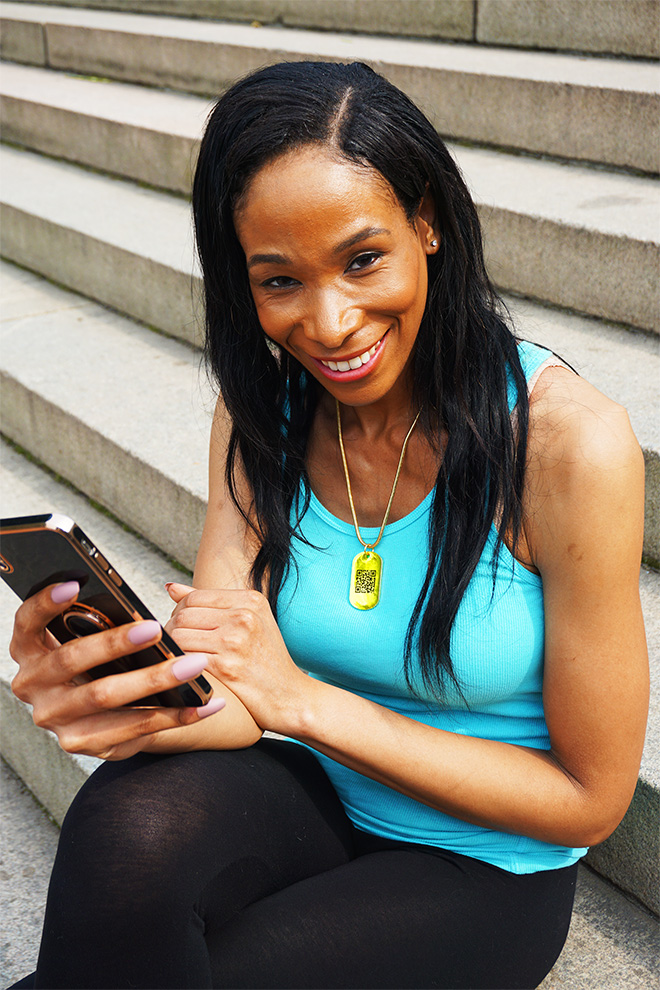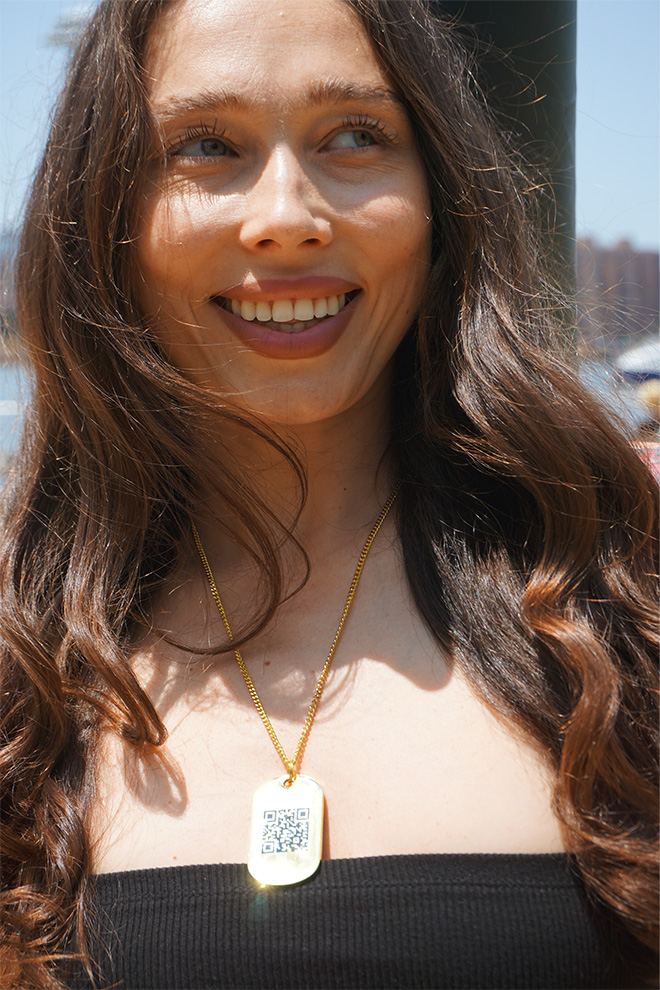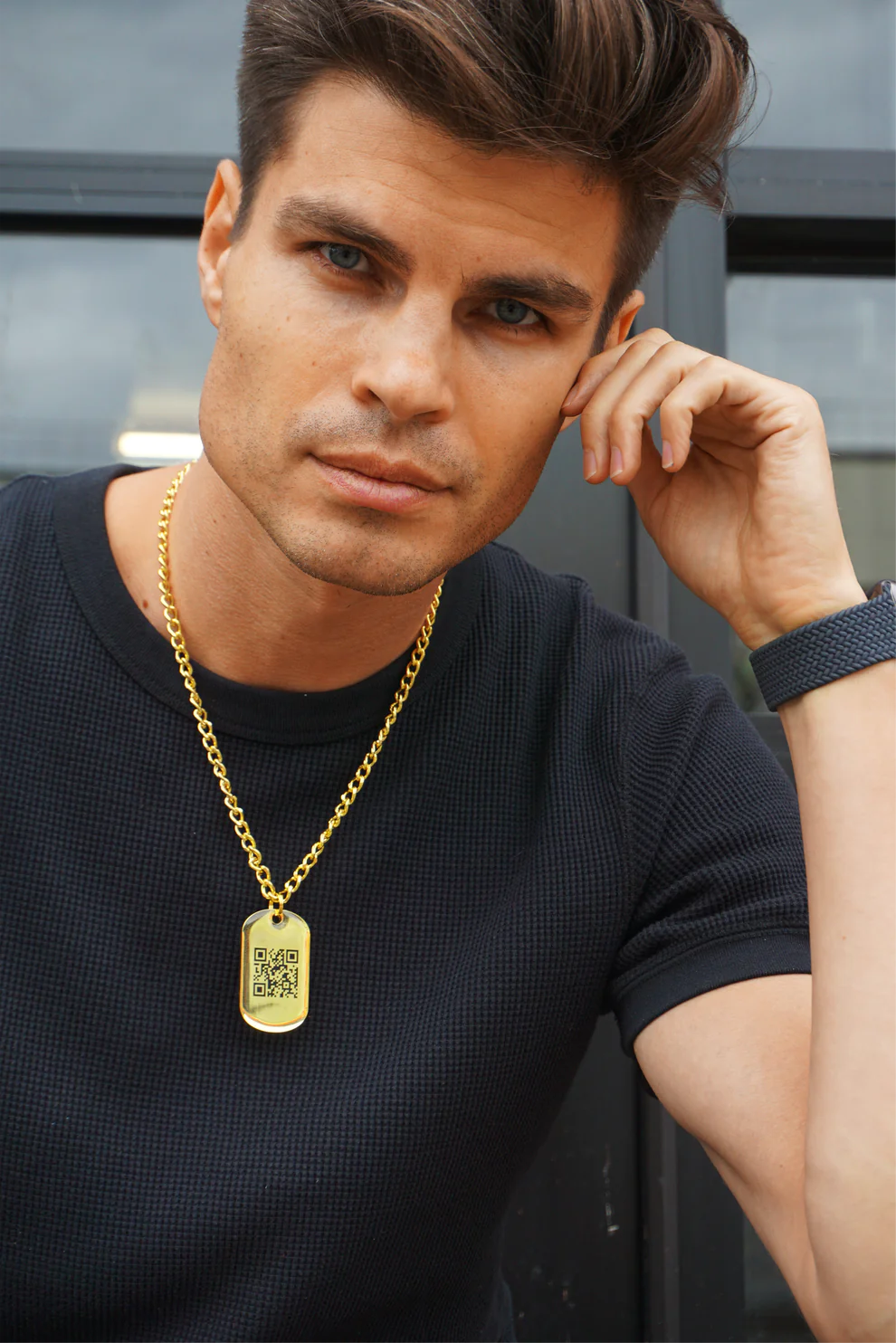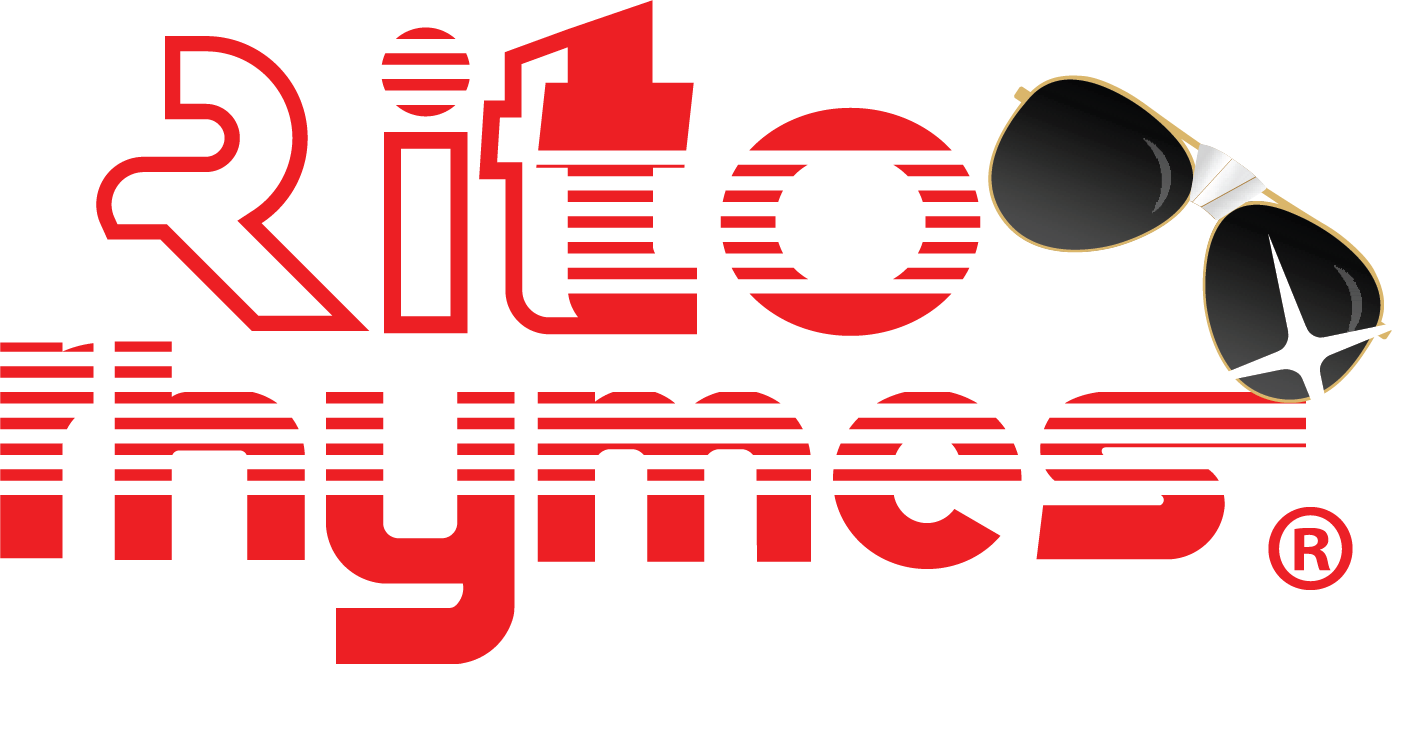Wearable Tech End-to-End Management
Overview
Jumptag Club was a limited-run wearable tech pilot designed to bridge digital identity and physical experience—using fashion as the medium and a QR-enabled backend as the engine. Led by Rito, the project brought together a team of 6 collaborators to execute across product, UX, engineering, and fashion.
At its core, Jumptag Club wasn’t about inventing new technology—it was about reframing existing tools like dynamic QR codes into a stylized, user-friendly, and culturally resonant experience. With a focus on aesthetics, usability, and modularity, the product was positioned as a sleek, real-world interface for connecting people to whatever mattered most—be it wallets, portfolios, or social links.
The platform went through multiple development stages and culminated in a hybrid mobile app (Android) paired with physical accessories. The tags were deployed in a live, high-profile fashion context—merging utility and style in a way that was forward-thinking but grounded in real-world use.
Key project highlights:
- Led end-to-end product strategy and execution, from ideation to deployment, collaborating with developers, designers, and assistants
- Developed a full-stack QR platform over multiple iterations (Django, SvelteKit, PostgreSQL, Prisma) and released a hybrid mobile app on Android
- Integrated into the NYC fashion scene, with Jumptag Club featured at the Future Forward fashion show alongside designers like Pamela Dennis and Romeo Hunte
- Worn by elite models, including those featured in Vogue and Harper’s Bazaar, during an immersive, interactive show experience
- Built and branded a fully custom Shopify storefront, with front-end enhancements and curated product visuals
- Directed original photoshoots across NYC and NJ to support launch visuals, executed with published talent
Roles by Rito
Product Manager
Brand Strategist
Creative Director
UX Strategist, Architect & Designer
Photographer
New York Fashion Week Activations
Exclusive Fashion Show Feature
Jumptag Club at DeMode, NYFW
The turning point for Jumptag Club’s public debut came during New York Fashion Week, at an exclusive event titled DeMode, hosted at Mercedes-Benz Manhattan in September 2023. Organized by Emily Burnette, the show brought together a curated group of designers exploring the future of fashion—and Rito’s wearable tech unexpectedly became a centerpiece of the experience.
The opportunity came through organic networking. While attending a Fashion Mingle event, Rito connected with Emily and shared the Jumptag concept. With only a few days' notice, he was invited to participate in DeMode. There was little clarity on how exactly the show would be structured, but Rito arrived prepared—with hardware, branding, and production-ready Jumptags in hand.
What unfolded was a moment of unexpected spotlight.

DeMode Fashion Show Floor
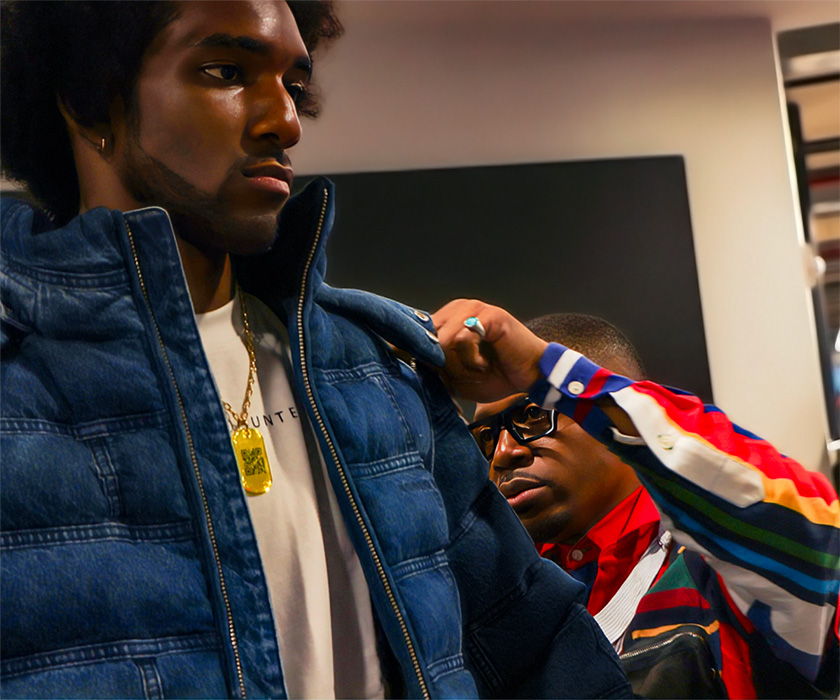
Romeo Hunte dressing his model wearing a jumptag set to his website
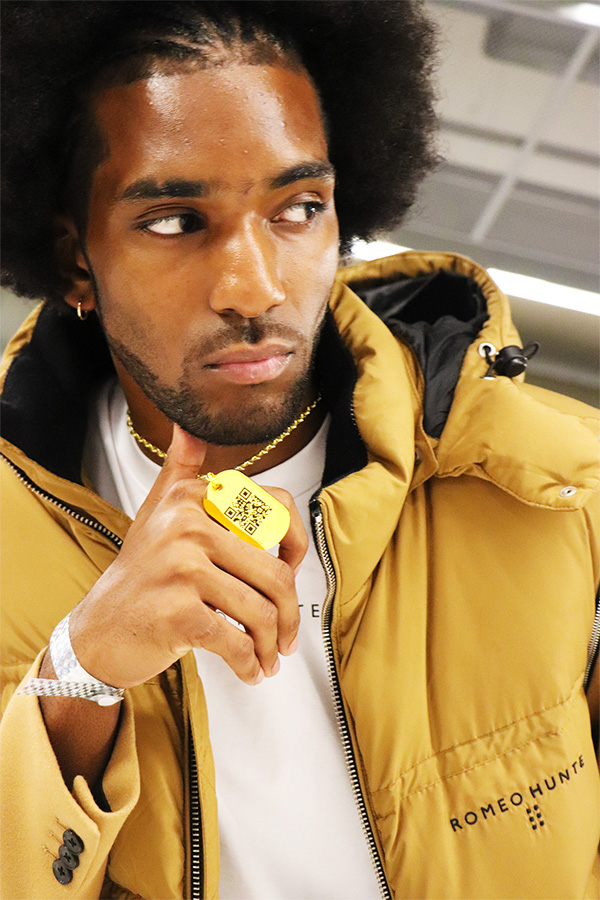

Guests scanning the model's Jumptag with their phone's regular camera app or any generic QR scanner will jump to his website
Jumptag Club quickly became the anchor wearable tech of the entire event, integrated into nearly every designer’s showcase as a unifying accessory. High-profile participants included Pamela Dennis, Romeo Hunte, and other emerging names—each leveraging Jumptags to extend their collections into the digital layer, including repurposing it as a bracelet in one case. The tags were worn by models standing on display platforms and moving throughout the venue, allowing guests to scan the wearable QR codes and interact with live digital content in real time unique to each designer.
Key outcomes from the activation included:
• 100% scan processing and uptime, demonstrating real-world performance under pressure
• Elegant integration across multiple design aesthetics, showcasing the product’s flexibility
• Active guest interaction, confirming usability, curiosity, and functionality under live conditions

Rito, Emily Burnette and Pamela Dennis
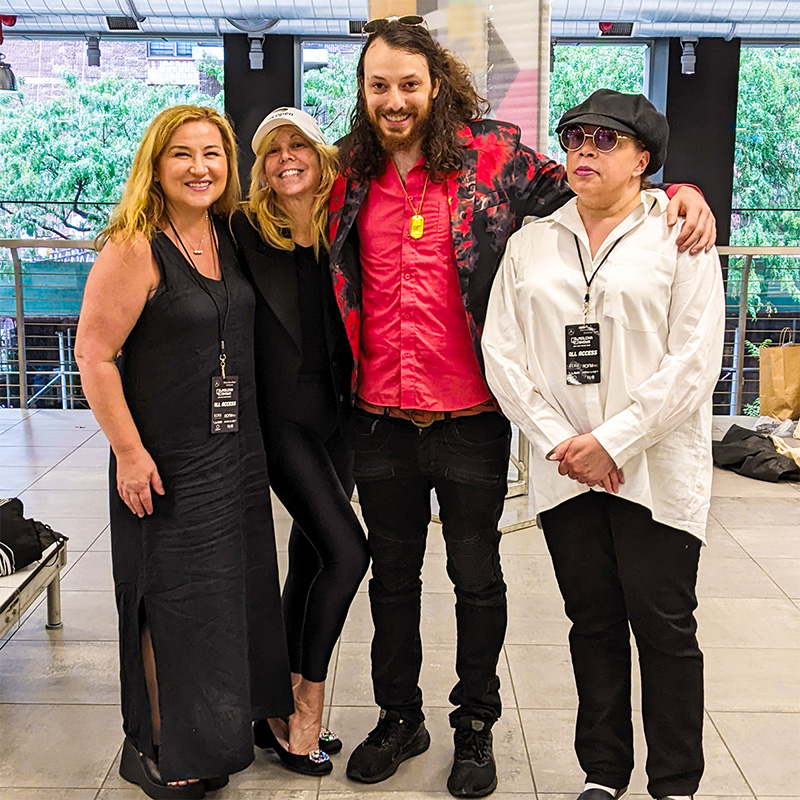
Designers including Pamela Dennis, Rito, Jax
Rito also served as a photographer, documenting the experience while ensuring the Jumptags were presented both stylistically and technically at their best.
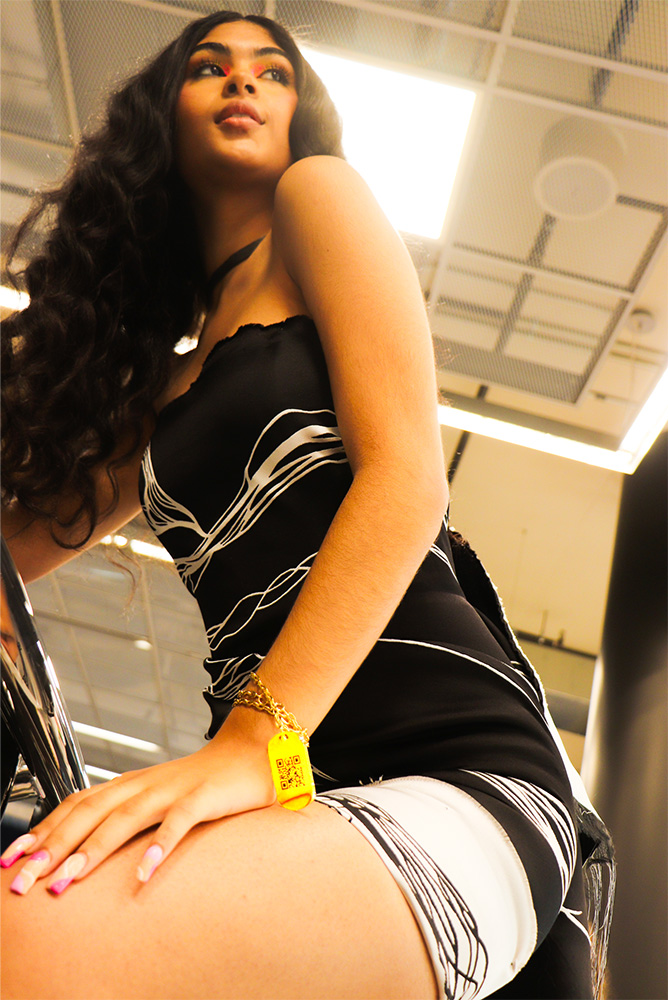
Model wearing a Pamela Dennis dress and a jumptag purposed as a bracelet and set to her brand's instagram
Though the event was private and not metrics-driven, the show proved a critical use case: Jumptag Club could seamlessly empower fashion designers with real-time, interactive digital extensions—without needing to alter their creative vision.
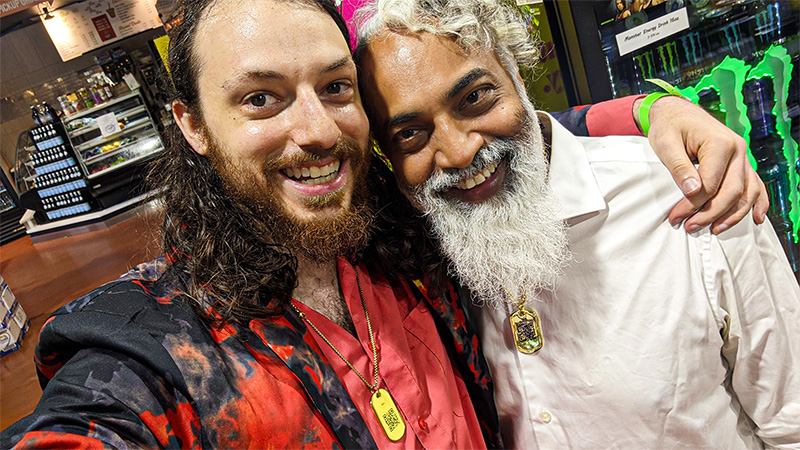
Bonus: Rito ran into renowned men's fashion designer Terry Singh outside of the event and they shared a jumptag moment together
Fashion Show Sponsorship
Real-World Testing & Unexpected Insights
To test the third iteration in a real-world setting, Jumptag Club served as an official sponsor for a Fashion Mingle x Asia Society event held during New York Fashion Week.

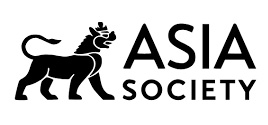
The event featured a dozen independent fashion brands, live runway presentations, and a speaker series. Among the designers was Ajay, the founder of Gingerblu, who actively used a Jumptag throughout the event to share his website, contact info, and phone number during networking.
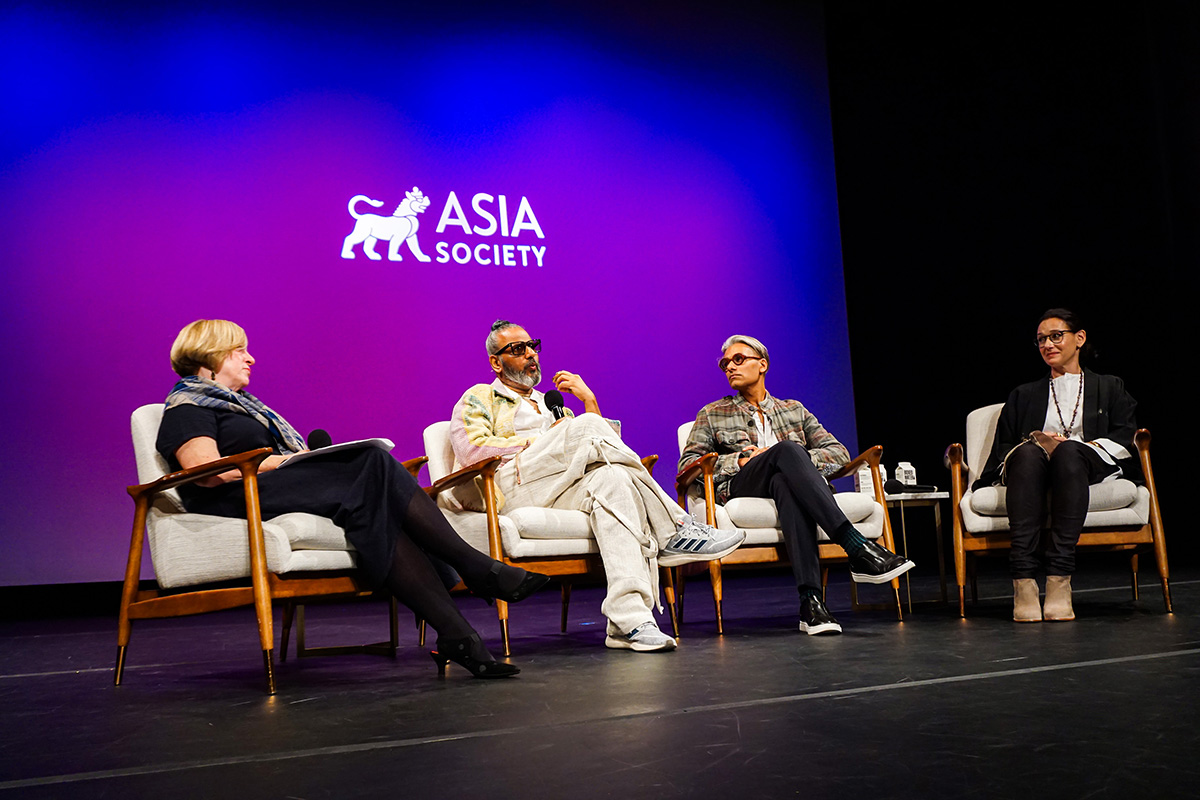
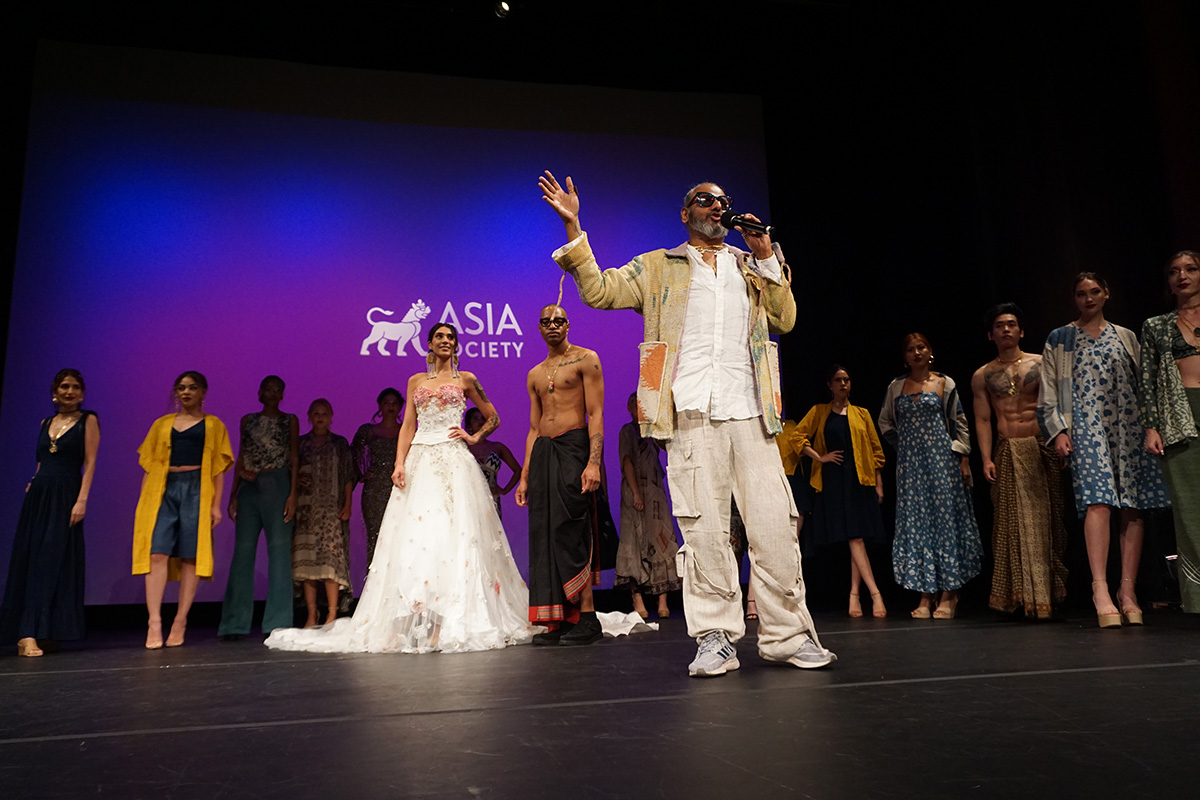
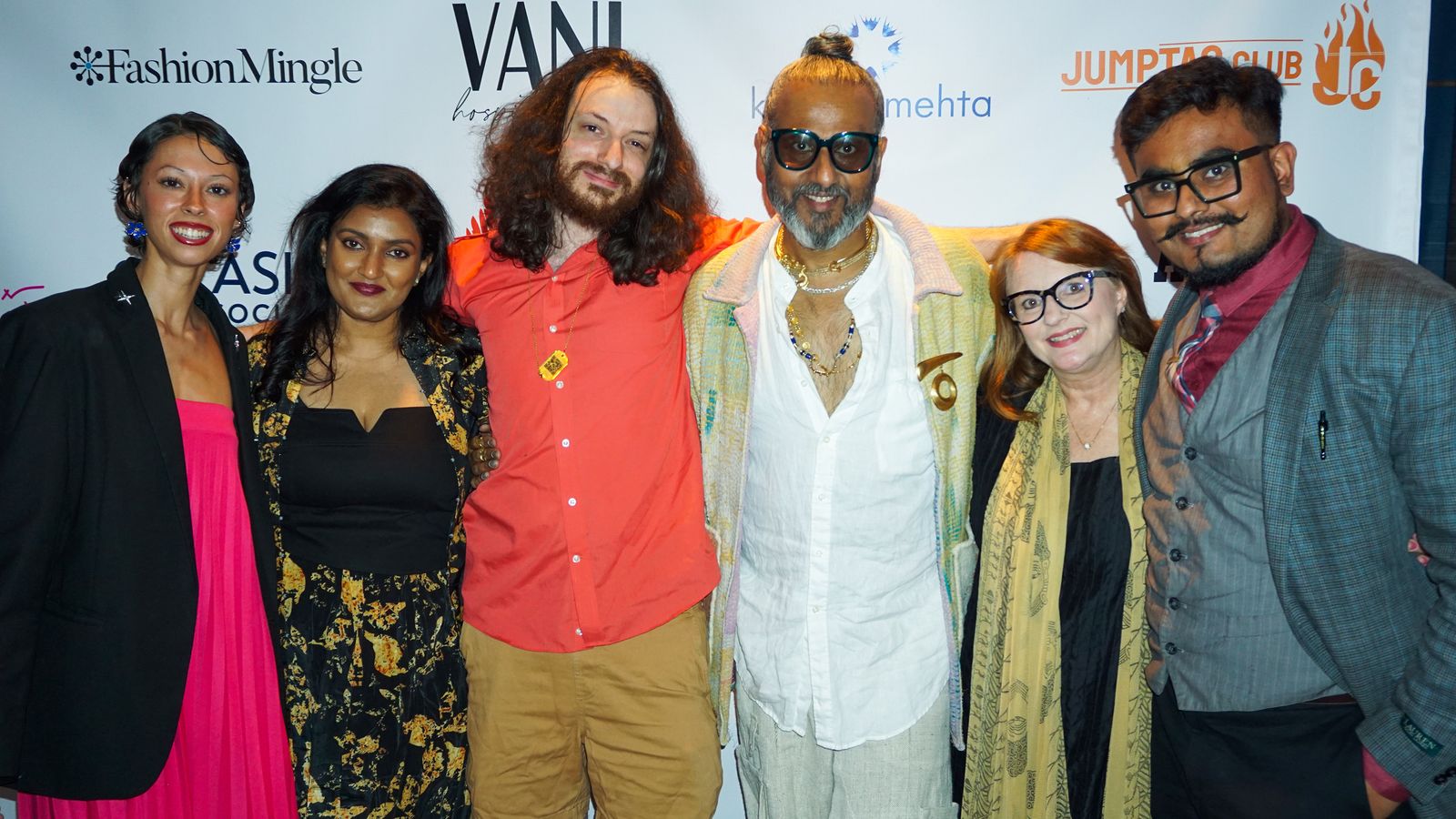
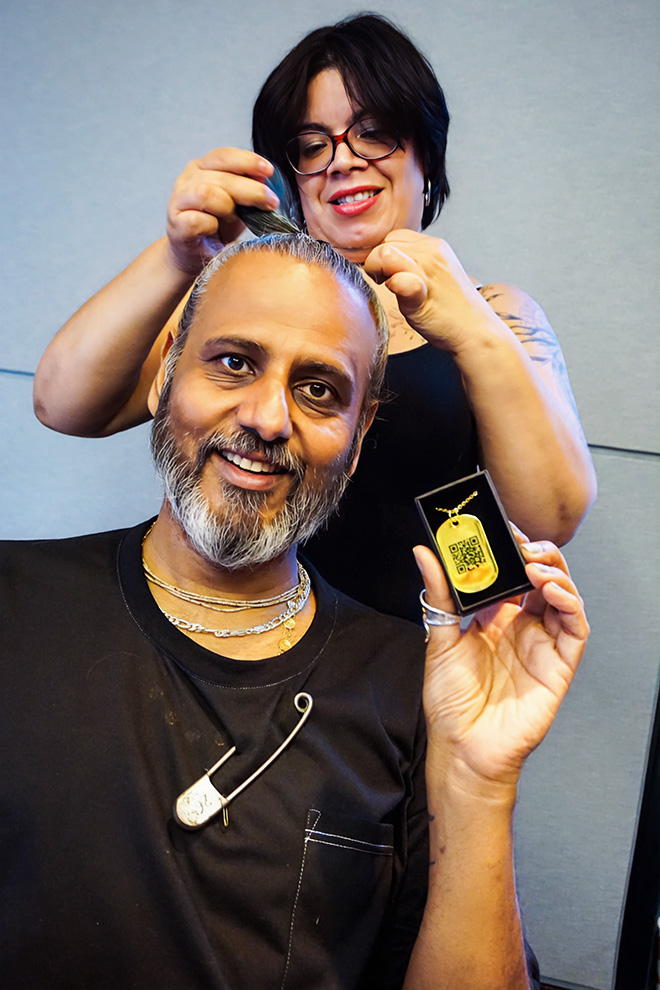
The activation demonstrated how Jumptags could operate seamlessly in live, high-touch settings—used organically in a professional environment, with real-time interactions captured and documented. But the experience also revealed an unexpected insight during testing.
While Jumptag Club had released its Android app first as a low-friction entry point for internal testing, the plan had always included iOS development. Android was chosen to validate the core functionality in a live environment with faster deployment timelines—not as an exclusive platform.
What surprised the team wasn’t the lack of adoption—it was the complete absence of Android users at the event. Despite Android holding the global majority of smartphone market share, everyone Rito encountered in this fashion-forward NYC setting used iPhones. Designers, media reps, staff, and attendees—all were part of an ecosystem that revolved around iOS-exclusive tools like iMessage, Airdrop, and FaceTime.
This wasn’t a known industry stat—it wasn’t something readily researchable. But through direct engagement, the team uncovered a boots-on-the-ground ethnographic insight: in fashion circles—especially in cities like New York—iPhone isn’t just common, it’s culturally embedded. Though users could still access the Jumptag App web platform without issue, the experience clarified the need to prioritize iOS development if the platform were to scale within this audience.
Rito, who also served as photographer for the event, captured Jumptags being used in context—showing their utility and flexibility even amidst platform limitations. The event offered strategic validation, hands-on learning, and deeper alignment with the audience’s behavioral norms.
Physical Product
Jewelry Design and Production
The physical foundation of Jumptag Club lay in the jewelry itself—custom-designed wearable tags that fused utility with a distinct, fashion-forward edge. Rito led the creative direction for these pieces, working closely with manufacturers to bring his specifications and concepts to life. The collaboration involved not just design mockups, but in-depth communication about materials, durability, and finish—bridging the aesthetic vision with industrial feasibility.
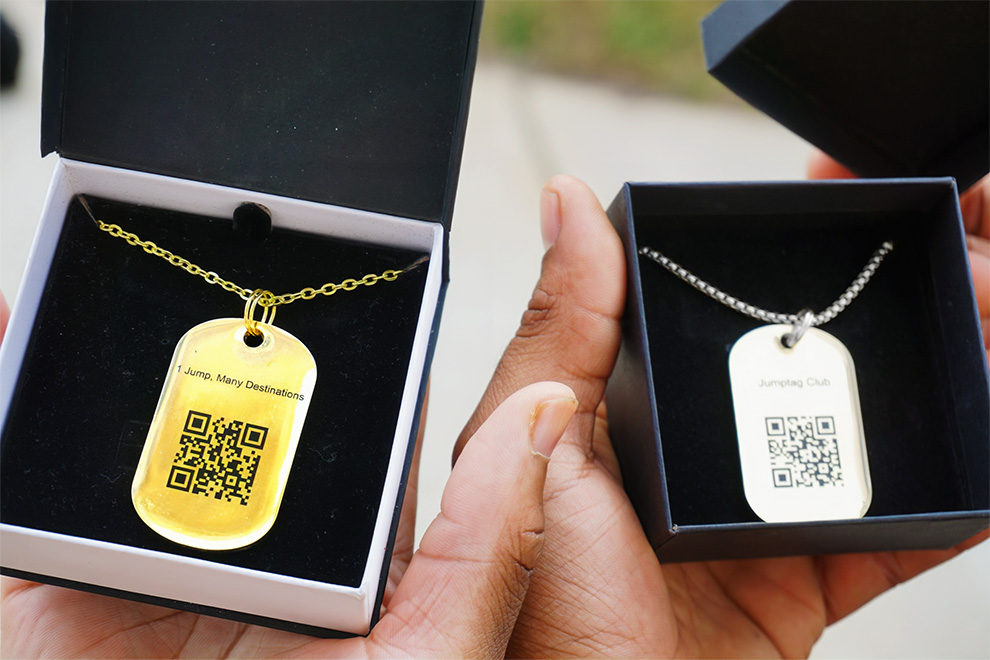
Two Jumptags in opened boxes
Through this process, Rito gained firsthand experience in aspects of metallurgy and jewelry manufacturing, learning how different alloys responded to plating, how certain metals affected shine and durability, and how purity levels could influence wearability—especially in terms of skin sensitivity or tarnish over time. These insights informed decisions about which materials to use, what finishes to avoid, and how to optimize the tags for both looks and longevity.
Beyond coordination, Rito also stepped into the hands-on side of production. Using jewelry tools and materials procured specifically for testing and experimentation, he manually assembled, arranged, and tested various tag configurations with different chains, clasps, rings, and bracelet connectors. This process involved both visual experimentation and physical prototyping, assessing weight, bendability, and overall wear comfort.
But it wasn’t just about style—it was also a deep exercise in user experience design. Every wearable variation was evaluated for how it behaved during actual use:
- How easily the tag could rotate, allowing users to conceal the QR code when desired
- The ergonomics of wearing it as a necklace versus a bracelet
- The scannability of the code under various lighting conditions, including how high-shine finishes could cause reflection issues in direct sunlight
- How the piece aged over time, with attention to wear and tear, smudging, and surface integrity
These considerations helped ensure that Jumptags weren’t just visually compelling—they were intentionally designed for real-world usage. Every detail, from the angle at which a QR code could be scanned, to how discreetly it could be worn in public, was part of a larger effort to create a seamless, fashion-aligned UX layer built into the jewelry itself.
Platform Development
First Iteration
The initial development phase of Jumptag Club began with a lightweight prototype built to test the core idea in a real-world setting. A family member stepped in to help stand up a simple Django-based web application—just enough infrastructure to enable Rito to validate the product experience and functionality with a live system.
Using the domain jumptag.app, Rito launched the first batch of Jumptags, each encoded with a unique UUID that mapped to a corresponding QR code destination. These early tags were engraved with static codes, but the linked platform provided a foundational layer of redirect logic that could be expanded later.
Despite its modest architecture, the first iteration performed reliably in the field. The tags were successfully scanned in a range of physical environments, and the redirect speeds were fast and consistent. Importantly, this early success confirmed that the core concept—using QR-tagged jewelry to bridge physical interaction with digital destinations—could operate smoothly in real-world conditions.
This prototype marked a turning point. With functional proof in hand, the path was now open to build out more advanced features, explore dynamic personalization, and begin developing the Jumptag Club experience with a broader audience in mind.
Second Iteration
Expanding Functionality with a New Stack
After validating the core concept with a basic prototype, Rito moved into a more advanced build phase for Jumptag Club. To accelerate development, he brought on a freelance full‑stack developer, who recommended a modern architecture centered on SvelteKit, Vercel, PostgreSQL, and Prisma—a stack that would enable greater scalability, maintainability, and customization.
The most critical upgrade in this iteration was the introduction of a persistent backend database, which allowed users to store, manage, and switch between multiple saved destinations tied to their Jumptag. This shift from static routing to dynamic management marked a foundational evolution in how the product functioned. Users could now update or toggle their QR destinations with ease—whether switching from a portfolio to a crypto wallet, or between contact links and payment platforms.
Additional support was introduced for a variety of URI schemes, expanding Jumptag’s versatility across platforms:
- Webapp URIs
- Phone numbers
- Text messages
- Ethereum wallet addresses
At the same time, the application began to take shape not just as a utility—but as a branded, stylistic experience. Rito led the UX design and creative direction, ensuring that the interface reflected the same visual identity as the physical product: clean, fashion‑forward, and user‑friendly. Attention to detail extended beyond functionality to the feeling of interacting with the app—reinforcing Jumptag Club’s identity as a culturally aware, aesthetically considered platform.
The user experience was meticulously crafted to feel seamless, approachable, and delightful—every flow guided users effortlessly from one task to the next. Early testers praised the clarity of controls, instant feedback, and cohesive visual language that made managing their Jumptag both intuitive and enjoyable.
It was important to allow for seamless registration of Jumptags, accommodating users with different technical knowledge and prior app experiences. Scanning to register is one of the most intuitive entry points when first encountering the product.
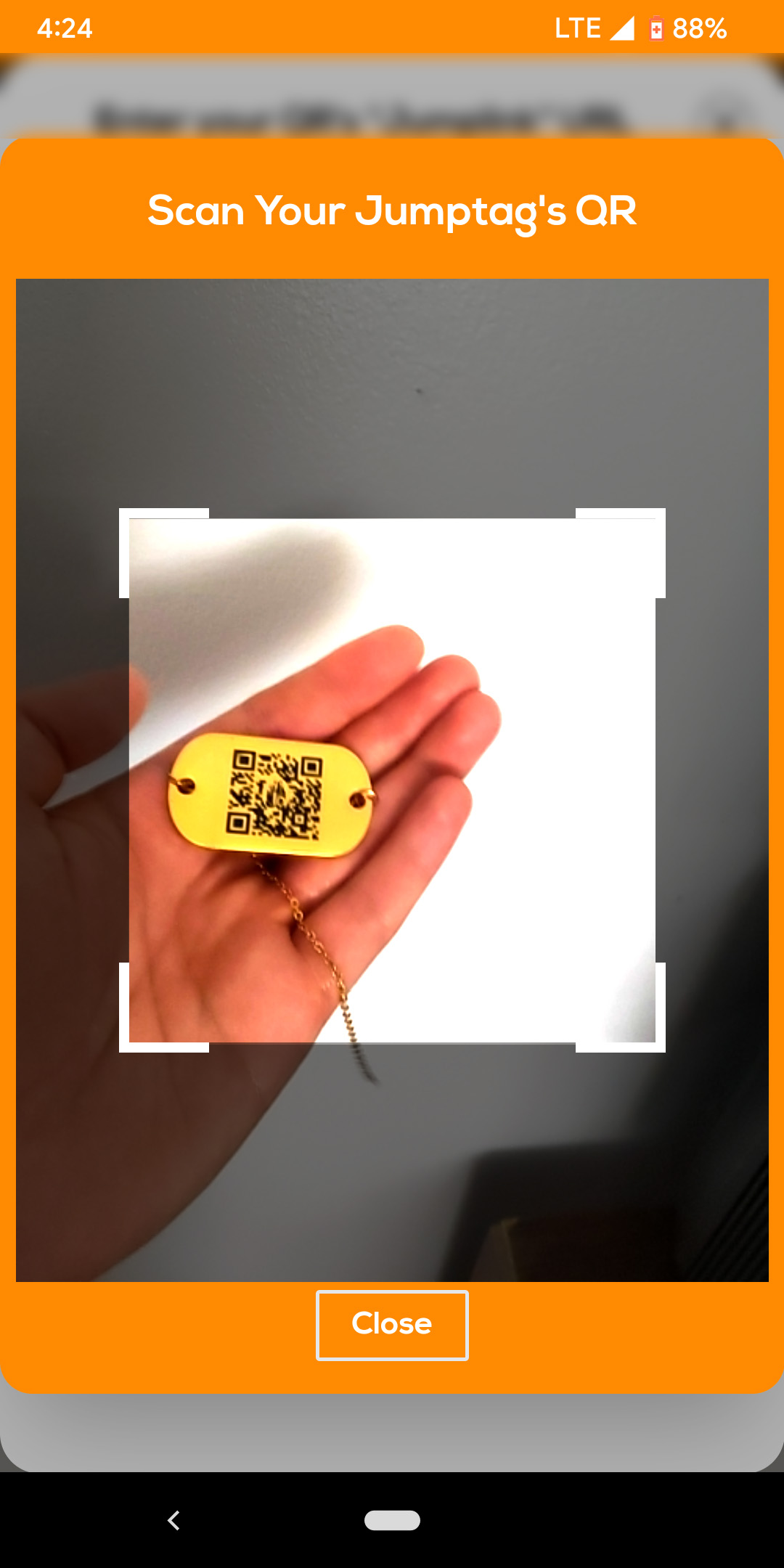
Striking the right balance between essential functionality and simplicity was its own challenge—especially given the product’s versatility. We conducted extensive testing and feedback sessions to confirm that controls were powerful yet approachable.
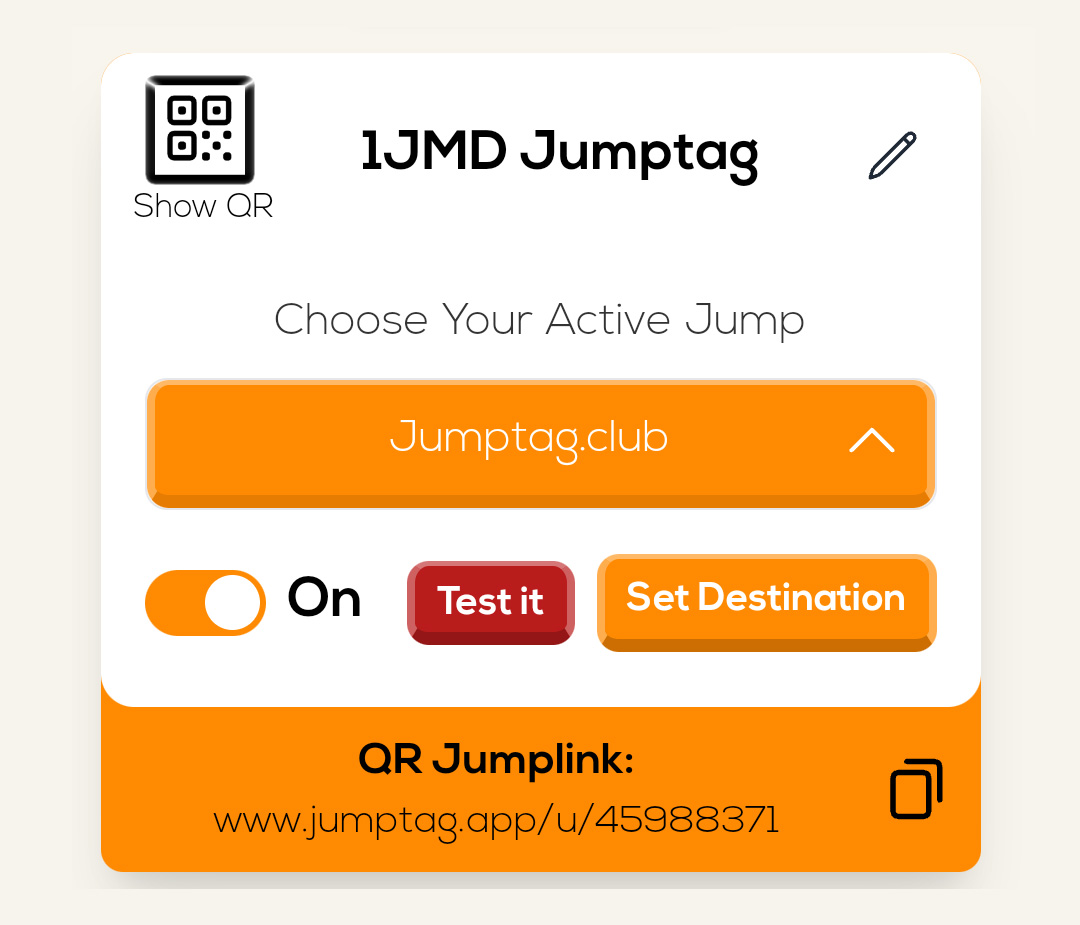
Wherever users landed in the Jumptag App, they needed to feel unmistakably “in Jumptag”—never in a generic interface. Form and function were married in a branded environment that felt both polished and effortless to use.
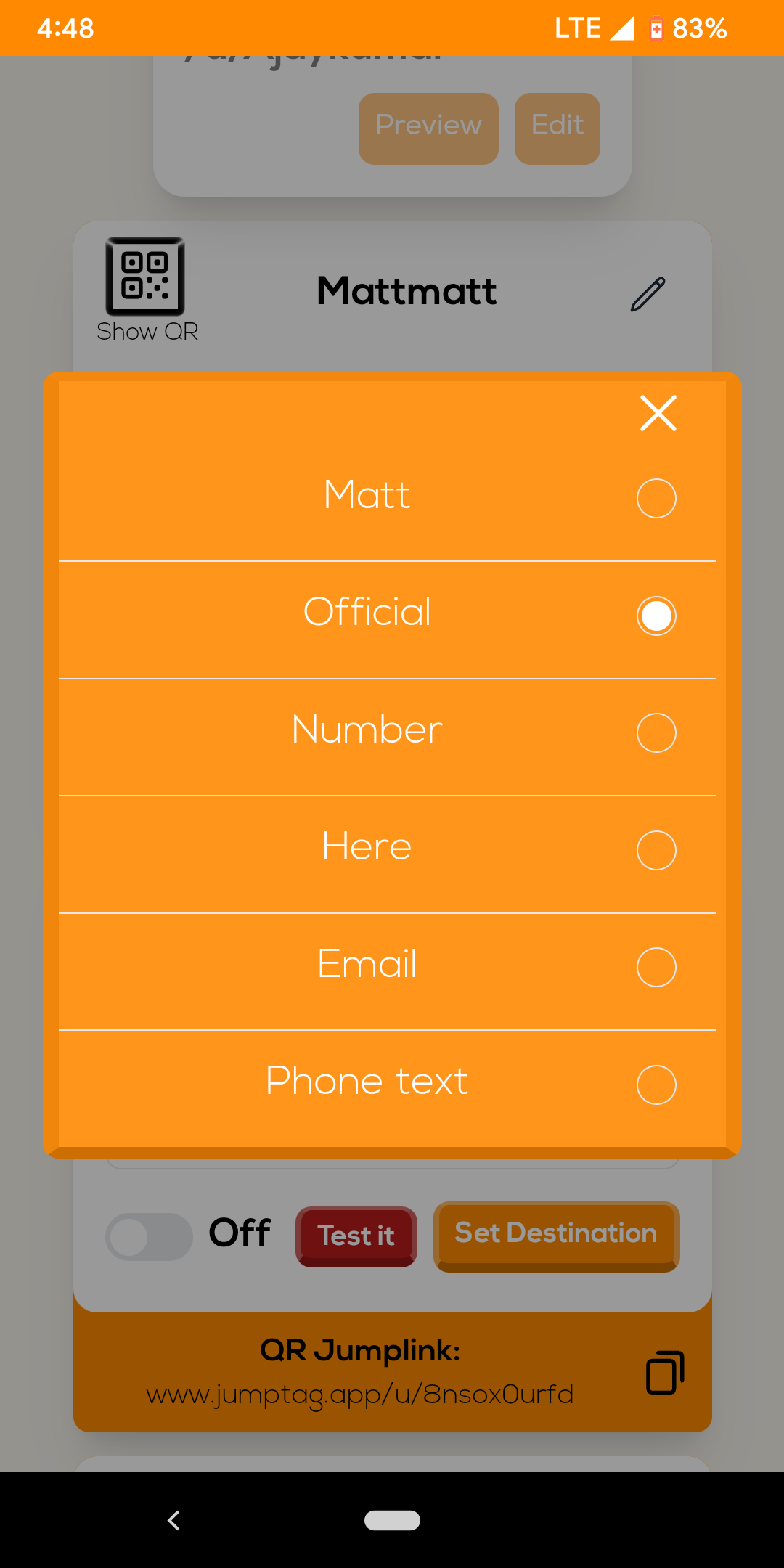
Rito remained hands-on throughout the process, managing product requirements, testing UX flows, and driving quality assurance to ensure every feature aligned with the vision of a modular, wearable, digital‑first identity layer.
Third Iteration
Mobile Hybrid App
The third iteration of Jumptag Club marked a major leap forward in functionality and platform integration. Building on earlier prototypes, the team expanded the capabilities of the web app to support a wider range of URI schemes—including streamlined redirects for major platforms and messaging services, cryptocurrency wallets (Dogecoin, Bitcoin, and others), location-sharing payloads, and even payment apps.
This broadened the utility of Jumptags significantly. Whether someone wanted to share their portfolio, phone number, Cash App link, or a live map location, the platform made it fast, scannable, and centralized through a single wearable link. The backend was optimized for reliability and speed, while the user experience became more fluid and intuitive for end users across use cases.
To complement this, the web app was wrapped into a hybrid Android application using React Native with WebView, providing a more seamless, app-like experience. The mobile app emulated native performance while still pulling from the live web platform, allowing faster iteration and consistent feature parity across interfaces. This version was formally reviewed and approved for launch in the Google Play Store, signaling a major milestone in product maturity and accessibility.
E-Commerce Readiness:
Shopify Storefront & Launch Infrastructure
In preparation for a potential commercial rollout, Rito designed and developed a fully branded Shopify storefront for Jumptag Club. The goal was to create a seamless e-commerce experience that aligned with the product’s visual language and fashion-forward positioning, while allowing for flexibility in inventory, fulfillment, and future campaign rollout.
Rather than relying on a default theme, the storefront was customized with additional front-end code and design enhancements, giving it the polish and distinction of a lifestyle brand—not a tech startup. The experience was shaped to mirror the tone of the product: sleek, minimal, modular, and user-first.
High-quality photography of the Jumptags adorned by models were captured by Rito himself and were integrated directly into the store layout, showcasing the product in real-world use and grounding it in authenticity and style. The product page design, collections, and user flows were tailored to communicate the product’s hybrid nature—part accessory, part platform.
Though the store was never formally launched, it was fully operational and positioned as a ready-to-activate channel, complete with:
• Configured product variants and pricing
• Integration-ready checkout and fulfillment systems
• On-brand copy, messaging, and styling
• CMS flexibility for future campaigns or seasonal drops
The Shopify build served not only as a retail foundation, but also as an extension of the Jumptag Club brand—a proof of readiness that demonstrated Rito’s ability to integrate product, design, and business infrastructure into a cohesive ecosystem.
Branding & Visual Identity
Identity and Voice
The branding of Jumptag Club was conceived from the start to bridge functionality and lifestyle—designed to feel more like a personal accessory than a piece of tech. Rito developed the foundational identity of the brand, including early concepts for the visual system, product naming, domain strategy, and initial messaging. His goal was to establish a tone that was modular, modern, and broadly accessible, while still grounded in cultural awareness and visual impact.
With the foundational brand architecture in place, Rito later brought in a virtual executive assistant with a background in creative direction to help further refine the aesthetic direction and brand voice. This collaborative partnership helped polish and elevate the identity, ensuring that every aspect—from the logo to the language—aligned with the forward-facing goals of Jumptag Club.
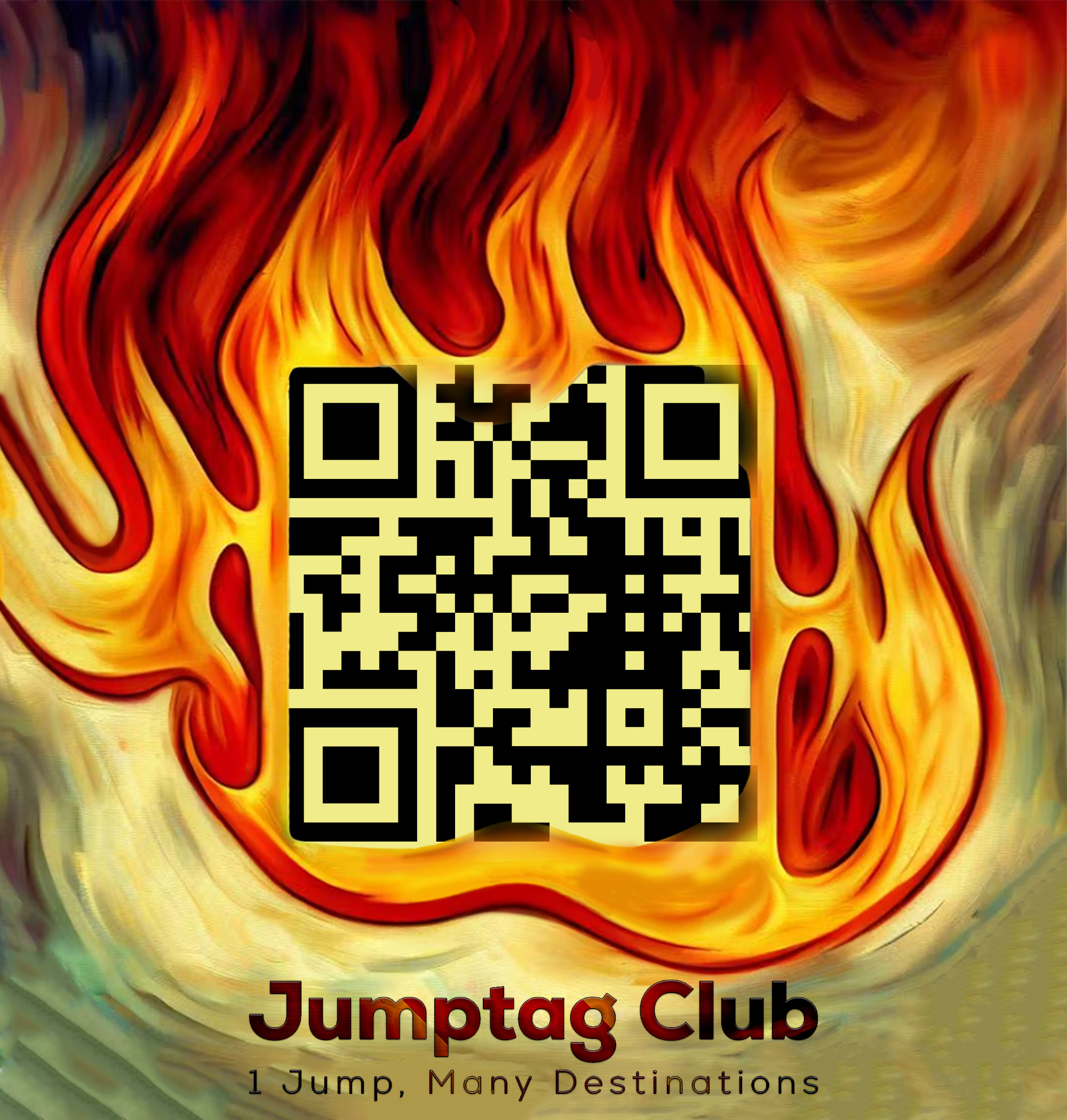
Original fully scannable logo

Second iteration logo
Key elements of the branding included:
• A tagline system that emphasized clarity, rhythm, and action: One Jump. Many Destinations.; Set it. Scan it. JUMP.; SIMPLE. COOL. CONVENIENT.
• A visual evolution of the logo: minimalistic, modern, and copyrighted to enhance legibility across print and digital.
• Refined color and typography treatments, chosen for clarity, contrast, and vibrancy—positioning Jumptag Club closer to lifestyle brands than utilitarian link platforms.
• Lifestyle and portrait photography that brought emotional resonance—featuring diverse models in vibrant, real-world contexts to reflect accessibility and versatility.
The resulting brand identity was consistently carried across all mediums, from the Shopify storefront and product packaging to app UI and real-world fashion activations. It helped frame Jumptag Club as a cultural product—not just a technical one—capable of resonating with diverse, fashion-conscious audiences.
Photography Style

The visual identity of Jumptag Club was built through a focused lifestyle and portrait photography approach—vibrant, emotive, and grounded in human experience. The photography highlighted the product in real-world contexts, showing not just how it looked, but how it felt in use.
Each image was designed to convey a sense of motion, identity, and authenticity. Featuring a diverse range of models across race, style, and background, the photos illustrated the product’s flexibility—how it could belong equally to a streetwear enthusiast, a high-fashion creative, or a casual urban commuter. The choice to highlight this diversity wasn’t incidental—it was part of the broader vision to position Jumptag Club as a universal, modular accessory that adapts to the person wearing it.
Shot across New York City and parts of New Jersey, the photoshoots were conceptualized, directed, and photographed personally by Rito. These weren’t stock portraits or controlled studio setups—they were live, in-the-world scenes shot in dynamic environments: rooftops, streets, cafes, creative spaces. The result is a library of visuals that reflect both the technical aesthetic of the product and the lived-in emotion of everyday wear.
Among the talent featured in the imagery are models who have gone on to appear in publications like Vogue and Harper’s Bazaar—a testament to both the styling of the product and the caliber of visual storytelling.
This photography work became a core pillar of the brand’s presence—used across the Jumptag App UI, e-commerce storefront, marketing materials, and fashion activation presentations.
Music
As part of Jumptag Club’s broader brand expression, Rito produced a playful, high-energy EDM parody track titled “Let’s Get Phygital”—a creative remix and lyrical reimagining of the iconic 1980s hit “Physical.” The rework replaces the original theme with a tongue-in-cheek celebration of “phygital” culture, bridging fashion, tech, and identity in the same spirit as the brand itself.
Rito served as the producer and lyricist, crafting the rewritten vocals to strike a careful balance between humor, brand messaging, and musical quality. The track was intentionally designed for use on a fashion runway or as social media promo content, pairing energetic beats with lines that highlight the wearable nature and lifestyle vibe of Jumptag Club—without tipping into commercial jingle territory.
The backing instrumental was synthesized from karaoke stems and adapted to create a polished EDM foundation. The vocals were performed by a male singer and audio engineer, who brought exceptional tone and production value to the project—refining the mix, enhancing the vocal performance, and delivering a final master that elevated the track into a fully realized creative asset.
While never officially used in a campaign, the song exists as a music-forward brand artifact—one that reflects the irreverent, cross-genre spirit of Jumptag Club, and stands ready for future runway use, video production, or digital storytelling.
Decision to Discontinue
Following the success of the fashion show activation and internal testing of the mobile application, Rito and the Jumptag Club team faced a critical inflection point: whether to invest further into scaling the platform or to pause and reassess long-term viability.
While the pilot demonstrated clear potential—technically and creatively—the decision was ultimately made to discontinue active development. This was not due to failure since an effort for serious expansion had not yet been pursued, but to a strategic evaluation of the market landscape, available resources, and personal life circumstances of the team.
Conclusion

Jumptag Club was a high-concept, cross-disciplinary initiative that brought together branding, product design, software engineering, and physical manufacturing into a single, cohesive user experience. From concept to real-world deployment, the project showcased how wearable tech could be integrated seamlessly into fashion-forward contexts—both technically and culturally.
Designed as a self-contained pilot with the foundations to expand, the project was fully realized within its scope and intentionally concluded. Its outcomes offer a clear demonstration of Rito’s ability to lead complex, boundary-pushing initiatives that synthesize aesthetics, usability, and system-level thinking across both digital and physical mediums.
Jumptag Club stands as a complete case study in vision-led execution—evidence of how strategy, design, and innovation can meet in the real world, then close with purpose.
